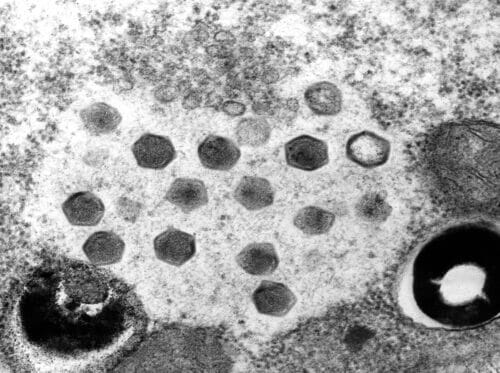According to Prof. Oded Beja, "From the genomic mapping we conducted, we concluded that the evolutionary origin of the genes is in the algae, not the virus, and we estimate that at some point in evolution the virus 'stealth' the genes to rhodopsins in a way that allows it to perform some manipulation related to light sensing"

Researchers at the Faculty of Biology at the Technion discovered channel proteins that are activated by light that migrated during evolution from algae to the giant viruses that infect them. The researchers discovered for the first time unique photoreceptors shared by marine giant viruses and the algae they infect. the study published inCurrent Biology Led Prof. Oded Beja and the post-doctoral student Dr. Andrey Rosenberg.
Prof. Beja's research group investigates rhodopsins - Proteins used both for harvesting light energy (in a different way than photosynthesis) and in sub-cellular light sensing mechanisms somewhat similar to the eye. The research in question focused on unique rhodopsins which are Light-activated rhodopsin channels. These are microbial rhodopsins that use light energy to drive ion fluxes through the cell membrane. These proteins, which are of natural origin in microbes, are used in neuroscience as a means optogenetic To carry out precise manipulations - excitation and inhibition - on the nerve cells, the neurons, using light. Optogenetics revolutionized brain research and is now considered the best method for activating specific cells to test their effect on the functioning of the organism.
green algae
The research on rhodopsin channels began with the characterization of proteins found in green algae, and since then different and diverse rhodopsin channels have been discovered in other single-celled algae and other single-celled organisms. These creatures also have small subcellular eyes and use rhodopsins to move away from too strong light or to approach light at the desired level.
The research group from the Technion, which conducted a metagenomic analysis of the genetic material in water, has now discovered that even inviruses They attack algae There are genes that lead to the development of rhodopsin channels. The group discovered a new family of rhodopsin channels that are formed in the attacked algae, and through electrophysiology experiments showed that the rhodopsin channels of the attacking viruses belong to the same family.
According to Prof. Beja, "From the genomic mapping we conducted, we concluded that the evolutionary origin of the genes is in algae, not in the virus, and we estimate that at some point in evolution, the virus 'stolen' the genes to rhodopsins in a way that allows it to perform some manipulation related to light sensing and gives it a survival advantage." It is possible that the attacking virus causes the algae to change behavior and swim to an area where the lighting helps it."
The study is based on information collected in Tara Oceans, an international project that maps the biodiversity in the sea through the continuous journey of the ship "Tara" in the days and oceans. The research was done in collaboration with Prof. Peter Hagman's group from Humboldt University in Berlin.
More of the topic in Hayadan:
